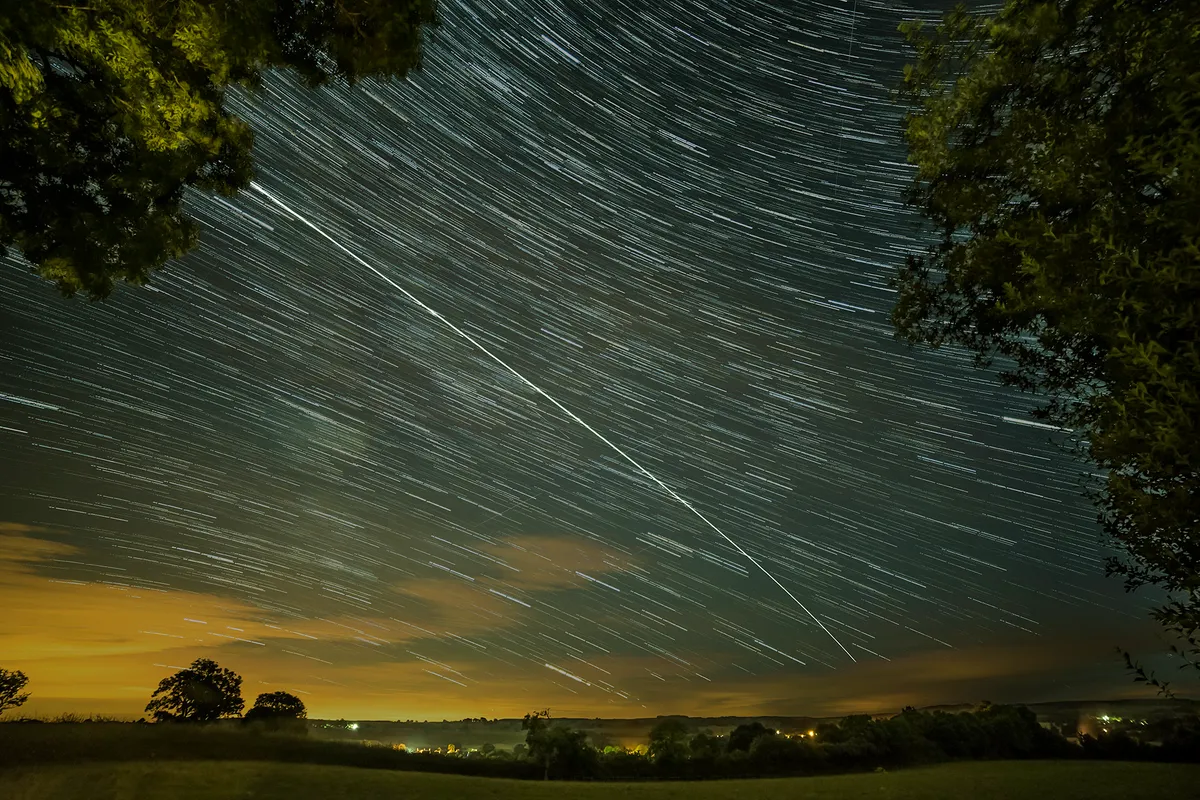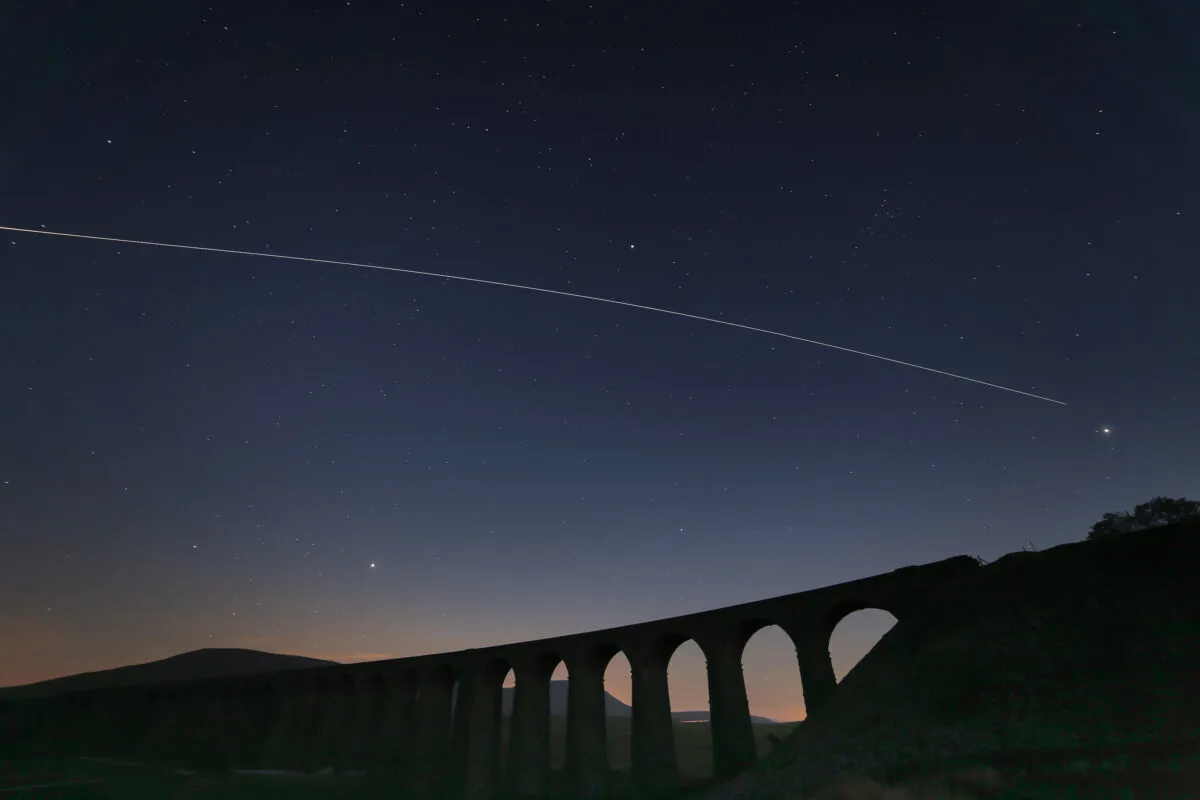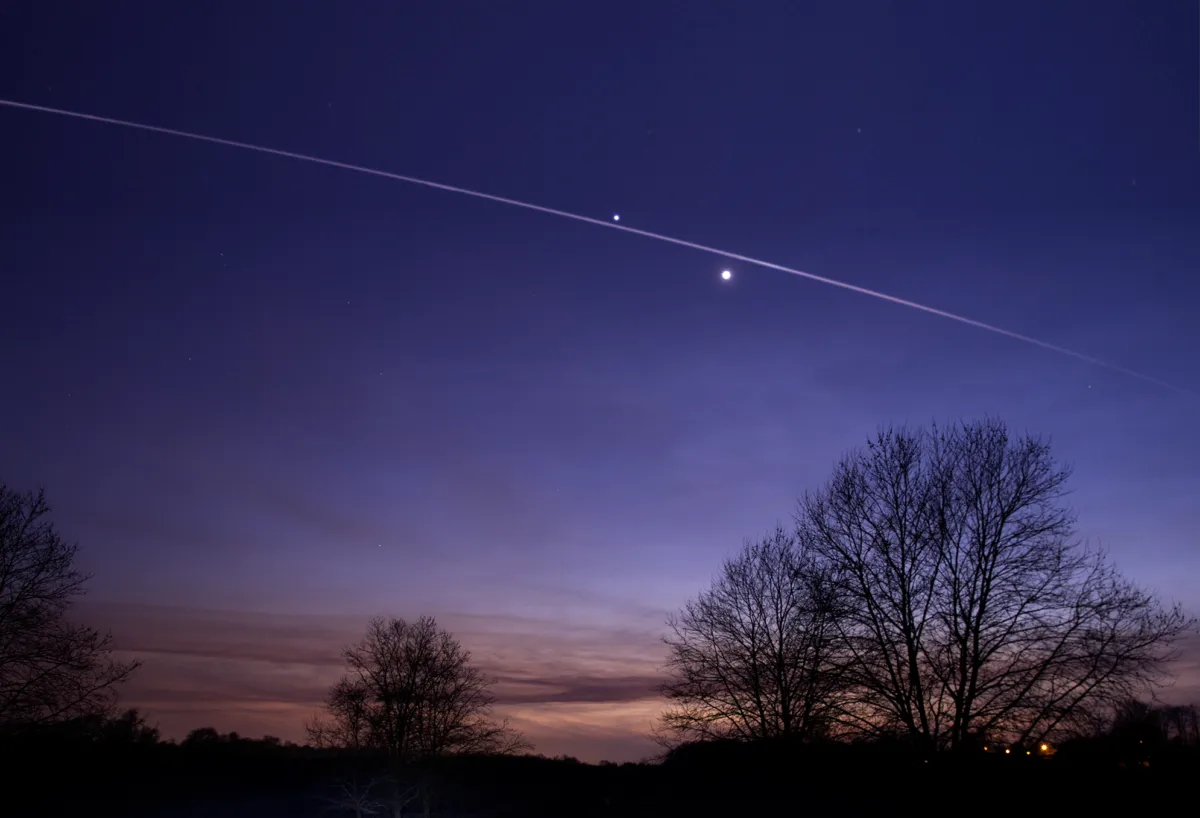It’s the size of a football field, has 3 to 6 people on board and it’s been orbiting 400km above Earth for over 20 years. Most exciting of all, the International Space Station is visible in the night sky to the naked eye if you know when and where to look.
Here we'll show you how to see the ISS in the night sky tonight, and what information you'll need to find it.
The International Space Station’s orbit takes it over the heads of around 90% of the world’s population, so chances are that it has already passed above you without you knowing.
In the middle of the day it’s too light to see it and in the middle of the night there’s not enough residual sunlight to illuminate it.Clouds can ruin sightings, of course, or the station may simply be too low to the horizon.
But as it circles the globe every 90 minutes (the crew get to see 16 sunrises and sunsets every day), there are plenty of opportunities to catch a super-bright overhead pass, a sight that’s hard to beat as a sky-watching spectacle.

Where to look to see the International Space Station
It goes without saying that if you can position yourself in a spot with a wide horizon-to-horizon vista you’ll get a longer view, but a pass can still wow even from a city back garden.
Passes always start from a westerly direction. Look out for a bright, white light travelling silently and smoothly across the sky.
If you see flashing lights, you’re looking at an aircraft, as the ISS has no visible flashing lights whatsoever.
When is the ISS visible in the night sky?
The best sightings of the International Space Station occur in the evening shortly after sunset, when the Sun has slipped below your horizon but there’s still enough light to reflect off the craft’s solar panels.Early morning before sunrise is another good time.
The ISS travels at about 27,000km/h and a good clear pass takes about six minutes for it to rise from one horizon, pass overhead and then disappear into Earth’s shadow.

Online resources for spotting the space station
Visit NASA's Spot the Station website and sign up to receive email or text alerts of ISS passes visible from your location. These may include less-than-optimal passes.
Or, visit Meteorwatch.org for an excellent calendar focusing on the best high and bright ISS passes, including precise times and expected brightness. There are ISS photography tips too.
Follow @VirtualAstroon Twitter for live countdowns and alerts for the most optimal passes, and to see great ISS photographs after a pass.
Heavens-above.com also gives times and directions for International Space Station passes.
Several apps track the ISS, including ISS Detector; Sputnik!; ISS Live Now; GoISSWatch; ISS on Live and ISS Tracker.

How to photograph the International Space Station
To capture the light trail with a DSLR, use a tripod and preferably a wide-angle lens that has its focus set to infinity.
Try exposures of 30 seconds or more at ISO 125, f/8, but some trial and error will be needed!
With a smartphone, NightCap Camera app (iOS) has a setting for capturing bright satellites such as the ISS. Read our full NightCap review.
On Android, Camera FV-5 may yield good results. Again, using a tripod will help.
Find out more by reading our guide: how to take a photo of the International Space Station.

More info about the ISS
There's lots of information and news online about what's actually happening on the International Space Station. Visit NASA's ISS webpage to find out who's up there now.
Or NASA also has a full online ISS launch schedule so you can see who or what is coming to and from the space station.
You can also take an online tour of the ISS with Expedition 33 Commander Suni Williams, or take a 3D tour of the space space station courtesy of the European Space Agency. Or, try this interactive panoramic tour of the ISS.
See what Earth looks like from the space station via the ISS HD Earth Viewing Experimentand on apps such as ISS Live Now and ISS on Live.
And, of course, even the International Space Station is on Twitter these days! You can always follow the ISS Twitter account.
Have you managed to spot the ISS, or even capture a photograph of it? Let us know by contacting us via email, or on Facebook, Twitter and Instagram.
